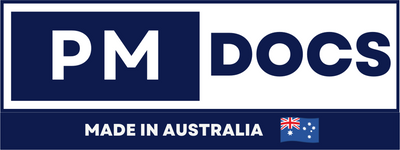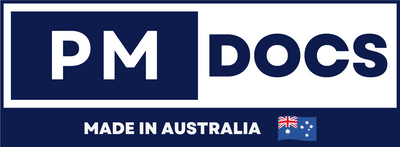Common Data Governance Mistakes In Australian Organisations
Introduction
Before we explore the mistakes, it's essential to understand what data governance entails. Essentially, data governance is the framework for managing data availability, usability, integrity, and security in an organisation. It involves setting policies, procedures, and standards for handling data to ensure that it is accurate, consistent, and secure. Data governance is not just about compliance; it's about creating a culture where data is seen as a valuable asset that needs to be managed with care and precision.

Common Data Governance Mistakes
1. Lack of a Clear Data Governance Strategy - One of the most frequent mistakes Australian organisations make is the absence of a clear data governance strategy. Without a defined approach, efforts can become fragmented and ineffective. A well-documented strategy outlines the goals, roles, responsibilities, and processes necessary to manage data effectively. It serves as a roadmap that guides the organisation in implementing consistent and structured data management practices.
2. How to Avoid This Mistake - To avoid this pitfall, organisations should develop a comprehensive data governance strategy that aligns with their business objectives. This strategy should clearly define the scope, goals, and the roles of all stakeholders involved in the data governance process. It should also include a detailed implementation plan that outlines the steps needed to achieve these goals and how progress will be measured.
3. Inadequate Stakeholder Engagement - Data governance is not solely the responsibility of the IT department. It requires the involvement of stakeholders from various departments, including finance, marketing, and operations. A common mistake is neglecting to engage these stakeholders, which can lead to a lack of buy-in and cooperation. Without cross-departmental collaboration, data governance initiatives may fail to address the unique needs and challenges of different business units.
4. How to Avoid This Mistake - To prevent this, organisations should involve stakeholders from the outset. Regular communication and collaboration ensure that all parties are aligned and committed to the data governance objectives. Encouraging cross-departmental participation can lead to more comprehensive and effective governance practices. Stakeholders should be actively involved in decision-making processes and governance activities, such as policy development and data quality assessments.
5. Focusing Solely on Compliance - While compliance with laws and regulations is a critical aspect of data governance, focusing solely on compliance can be limiting. Many organisations make the mistake of viewing data governance only through the lens of compliance, neglecting the broader business benefits. Compliance-centric approaches may lead to a checkbox mentality, where organisations meet minimum requirements without considering how data governance can support strategic goals.
6. How to Avoid This Mistake - Organisations should adopt a holistic approach to data governance, considering not just compliance but also how data can drive business value. This includes improving decision-making, enhancing customer experiences, and identifying new business opportunities. By aligning data governance with business strategy, organisations can use data as a strategic asset to achieve long-term success.
7. Insufficient Data Quality Management - Data quality issues are a significant hindrance to effective data governance. Poor data quality can lead to incorrect insights and decisions, undermining the value of data-driven initiatives. Many organisations fail to implement robust data quality management processes, leading to unreliable data. Without accurate and consistent data, organisations risk making decisions based on faulty information, resulting in operational inefficiencies and reduced customer satisfaction.
8. How to Avoid This Mistake - To address this, organisations should establish data quality management processes that include regular data cleansing, validation, and monitoring. Implementing automated tools can help maintain high data quality standards consistently. These tools can identify and correct errors in real-time, ensuring that data remains accurate and reliable.
9. Neglecting Data Security - In an era where data breaches are increasingly common, neglecting data security is a critical mistake. Protecting data from unauthorized access and breaches should be a top priority for any data governance framework. Failing to implement adequate security measures can result in significant financial losses, reputational damage, and legal consequences.
10. How to Avoid This Mistake - Organisations should implement strong security measures, including encryption, access controls, and regular security audits. Training employees on data security best practices is also essential to minimize risks. This includes educating staff on how to recognize and respond to security threats, such as phishing attacks and social engineering.
11. Failing to Assign Clear Roles and Responsibilities - Data governance requires clear roles and responsibilities. A common mistake is not defining who is responsible for what, leading to confusion and inefficiencies. Without clearly defined roles, employees may be unsure of their responsibilities, resulting in gaps in data governance activities and inconsistent data management practices.
12. How to Avoid This Mistake - To avoid this, organisations should establish a data governance council or committee that oversees the governance framework. This group should include representatives from all relevant departments and have clearly defined roles and responsibilities. The council should be responsible for setting governance policies, monitoring compliance, and ensuring alignment with business objectives.
13. Ignoring Change Management - Implementing data governance changes can be challenging, and many organisations overlook the importance of change management. This oversight can lead to resistance and failure to adopt new practices. Change management involves preparing, supporting, and guiding individuals and teams through organisational changes, ensuring a smooth transition and successful adoption of new processes and technologies.
14. How to Avoid This Mistake - Organisations should incorporate change management strategies into their data governance initiatives. This includes communicating the benefits of data governance, providing training, and supporting employees during the transition. Change management plans should outline the steps needed to prepare employees for the change, address potential resistance, and ensure ongoing support.
Governance Best Practices
To implement effective data governance, organisations should consider the following best practices:
-
Develop a Comprehensive Strategy: Ensure that your data governance strategy aligns with your business goals and includes clear objectives and roles. Regularly review and update the strategy to adapt to changing business needs and emerging data management trends.
-
Engage Stakeholders: Involve stakeholders from different departments to ensure buy-in and collaboration. Establish clear communication channels and foster a culture of shared responsibility and continuous improvement.
-
Focus Beyond Compliance: Look at data governance as a way to add business value, not just as a compliance requirement. Integrate data governance into strategic planning processes to drive innovation and competitive advantage.
-
Ensure Data Quality: Implement processes for regular data quality checks and cleansing. Use automated tools to maintain high data quality standards and foster a culture of data quality awareness.
-
Prioritize Data Security: Protect your data with strong security measures and regular audits. Educate employees on data security best practices and establish incident response plans for timely and effective breach response.
-
Define Roles Clearly: Establish clear roles and responsibilities within your data governance framework. Create role-specific training programs and maintain clear documentation to ensure accountability and collaboration.
-
Incorporate Change Management: Use change management strategies to facilitate the adoption of new data governance practices. Communicate the benefits of data governance and support employees throughout the transition.
Conclusion
Data governance is an ongoing process that requires commitment from the entire organisation. By understanding and avoiding common mistakes, Australian organisations can strengthen their data governance frameworks and harness the full potential of their data. Prioritizing data governance not only ensures compliance but also drives business growth and innovation. Embracing a strategic and holistic approach to data governance will enable organisations to navigate the complexities of the digital age, unlocking the value of their data assets and achieving sustainable success.




